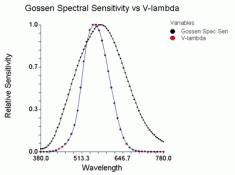If you get into the ZS method of exposure and development (I assume you do of some sort, maybe this is a bad assumption) and you have determined your personal film speed using the original spot meter, and you have determined your normal development time for the enlarger and paper that you use, should you have the new spot meter adjusted to match the original spot meter to nullify any possible difference, be it 1/3 or whatever. Seems that any variation in the new meter can be reduced to at least match the old one so that your standard EI for the film and its "normal" development time is not adversely affected by any variation in the new meter. I don't know myself, because I have only one meter, the Pentax V, and that's all I use----I'm just asking those more knowledgeable than me.
Not to overthink it too much, as that risk is always present in such discussions, but this keeps going through my head when it is said that 1/3 stop difference is not to be a concern. I ask myself, why is it on the meter scale then?
125PX at EI 64 dev for 5min and 15sec (hc-110 dil 1:63 from concentrate) did not produce the proper gray scale values in Zones VII, VIII and IX when I was testing Plus-X, but a further reduction in development time of about 15% to 4min 30sec nailed those zones properly on the scale without adverse affect in the lower zones.
So, my question is, when it comes to the upper zones of the gray scale, I wonder if a 1/3 stop difference in the direction of increased exposure is a valid concern to one's personal EI and dev time?
I don't think +1/3 stop is a great concern for a short scale subject, owing to lattitude, but for a "normal" SBR, when "normal" dev is planned, a continuous +1/3 difference could squeeze the upper zones where you don't want them, it would seem. I may someday want to get me a backup spot meter. Yes, I'm a zonie, but that is beside the point

, so if someone could provide input to my concern, that would be great.
Thanks in advance.
Chuck






 , so if someone could provide input to my concern, that would be great.
, so if someone could provide input to my concern, that would be great.